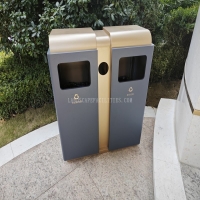Welcome to the website for landscape facilities products and knowledge.
How does the table’s design ensure stability when used in dynamic or interactive environments?
In today's dynamic workspaces and interactive environments, table stability becomes paramount for user comfort and productivity. Manufacturers employ multiple engineering strategies to ensure tables remain steadfast during use. The fundamental approach begins with structural geometry - wider leg spans create broader stability triangles that distribute weight more effectively. Cross-bracing systems, often implemented through H or X-shaped supports beneath the table, create tension-compression relationships that counteract lateral forces.
Material selection significantly impacts stability performance. High-density manufactured woods with layered construction resist warping better than solid wood in fluctuating humidity conditions. Metal table frames often incorporate weighted foot designs that lower the center of gravity, making the entire structure less prone to tipping. For interactive touchscreen tables, engineers add mass dampening systems that absorb vibration energy from repeated touches and gestures.
Leg leveling systems represent another critical stability component. Advanced tables feature independent micro-adjustable glides that compensate for uneven floors up to 2 inches variance. Some premium designs incorporate gimbaled leg mechanisms that maintain full surface contact even on significantly sloped floors. The interface between table legs and the top surface also matters - specialized mounting plates with multiple attachment points prevent the gradual loosening that causes wobble over time.
For technology-enhanced tables used in collaborative settings, manufacturers implement additional stabilization methods. Cable management systems are strategically placed to avoid creating top-heavy configurations. Electronic component weight is distributed evenly across the surface area rather than concentrated in one section. Some interactive tables even incorporate active stabilization using pressure sensors and micro-motors that make real-time adjustments, similar to technology found in camera gimbals.
Surface texture and edge design contribute to perceived stability. Beveled edges reduce the visual weight while maintaining structural integrity, and non-reflective matte finishes minimize the appearance of vibration. For high-traffic environments, manufacturers conduct rigorous dynamic testing simulating years of use within weeks, identifying potential failure points before production. These comprehensive approaches ensure modern tables maintain their steadfast performance through years of intensive use in ever-changing interactive spaces.
Related search:

Recommendation
Double-bucket garbage bin, outdoor, metal, multi-color, powder-coated, double-bucket trash can